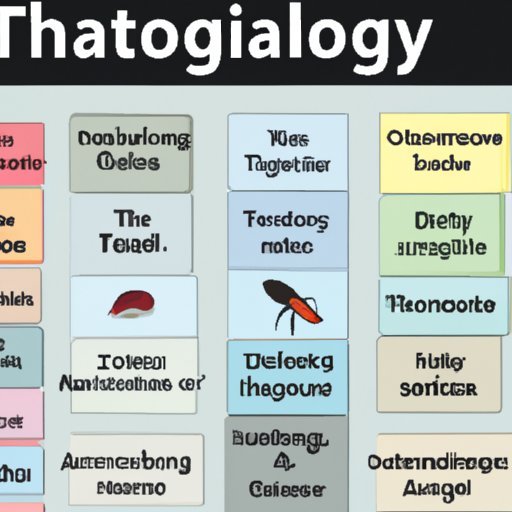Introduction
Taxonomy is the science of naming and grouping organisms. It is a branch of biology that studies how living things are classified and named. Taxonomists use a variety of methods to identify and classify organisms, from physical characteristics to genetic data. By using taxonomy, scientists can better understand the relationships between different species and their evolutionary histories.
Understanding Taxonomy: The Science of Naming and Grouping Organisms
Taxonomy is based on the hierarchy of life. This hierarchical system was first proposed by Swedish botanist Carl Linnaeus in 1735. According to this system, each organism is placed in an ever-narrower group based on their shared characteristics. At the top of the hierarchy is the domain, which is divided into three categories: bacteria, archaea, and eukaryotes. Underneath the domain is the kingdom, followed by phylum, class, order, family, genus, and species.
Classification systems are used to organize and categorize organisms into groups according to their shared characteristics. These systems are based on the Linnaean hierarchy, but may differ slightly depending on the type of organism being studied. For example, some systems may have more or fewer categories than the traditional Linnaean hierarchy.

A Guide to Taxonomy: An Introduction to the Science of Naming and Grouping Organisms
Taxonomic keys are used to identify and classify organisms. These keys are diagrams or charts that compare the characteristics of various species. By comparing the characteristics of a given organism to those of other species, a taxonomist can determine which group it belongs to.
Taxonomic trees are also used to classify organisms. These diagrams show the hierarchical relationships between species. Each species is represented as a node on the tree, with lines connecting nodes that share common characteristics. By reading a taxonomic tree, one can gain an understanding of the evolutionary relationships between species.

Exploring the Basics of Taxonomy: The Science of Naming and Grouping Organisms
Binomial nomenclature is the system of giving each organism a two-part scientific name. The first part of the name is the genus, while the second part is the specific epithet. Together, these two names form the species name. For example, the scientific name for humans is Homo sapiens. Binomial nomenclature helps to ensure that each organism is correctly identified.
The principles of taxonomy are also important in understanding the science of naming and grouping organisms. These principles include the concept of homology, which states that similar structures in different species indicate a common ancestor; the concept of adaptation, which states that species evolve to fit their environment; and the concept of phylogeny, which states that species can be grouped according to their evolutionary histories.

Unraveling the Mysteries of Taxonomy: The Science of Naming and Grouping Organisms
Taxonomy is an important tool for understanding the world around us. By studying the relationships between different species, scientists can learn about their behavior, evolution, and ecology. They can also use taxonomy to identify new species and study their interactions with other organisms.
The history of taxonomy is also fascinating. Linnaeus’s work laid the foundation for modern taxonomy, but it has evolved over time. Today, taxonomists use a variety of techniques, from DNA sequencing to computer algorithms, to classify and name organisms.
Conclusion
Taxonomy is the science of naming and grouping organisms. It is based on the hierarchy of life and uses a variety of tools and techniques to classify and name species. Taxonomy is an important tool for understanding the world around us, from identifying new species to learning about their behavior and ecology. By exploring the history and principles of taxonomy, we can gain a greater appreciation for the science of naming and grouping organisms.
(Note: Is this article not meeting your expectations? Do you have knowledge or insights to share? Unlock new opportunities and expand your reach by joining our authors team. Click Registration to join us and share your expertise with our readers.)
